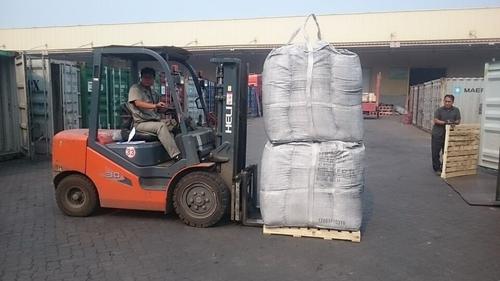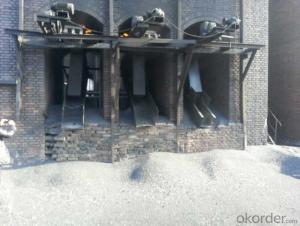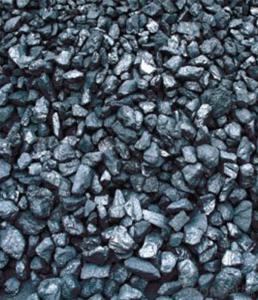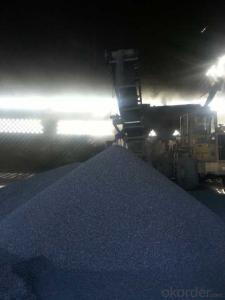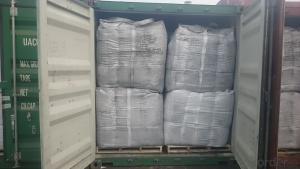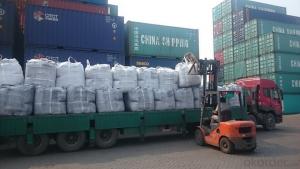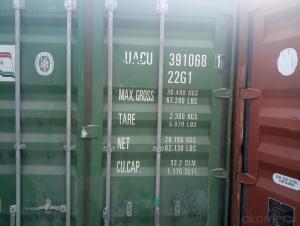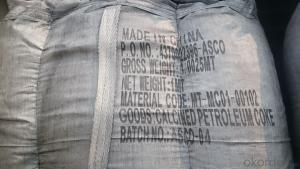Used in EAF as Charge Coke for Steel Plants with Moisture 0.5%max
- Loading Port:
- Tianjin
- Payment Terms:
- TT OR LC
- Min Order Qty:
- 21 m.t.
- Supply Capability:
- 6000 m.t./month
OKorder Service Pledge
OKorder Financial Service
You Might Also Like
Introduction:
Calcined anthracite can be called carbon additive, carbon raiser, recarburizer, injection coke, charging coke, gas calcined anthracite.
Carbon Additive/Calcined Anthracite Coal may substitute massively refinery coke or graphite. Meanwhile its cost is much less than the refinery coke and graphite. Carbon Additive is mainly used in electric steel ovens, water filtering, rust removal in shipbuilding and production of carbon material.
It has good characteristics with low ash, low resistivity, low sulphur, high carbon and high density. It is the best material for high quality carbon products. It is used as carbon additive in steel industry or fuel.
Features:
Best quality Taixi anthracite as raw materials through high temperature calcined at 800-1200 ℃ by the DC electric calciner with results in eliminating the moisture and volatile matter from Anthracite efficiently, improving the density and the electric conductivity and strengthening the mechanical strength and anti-oxidation, It has good characteristics with low ash, low resistivity, low carbon and high density. It is the best material for high quality carbon products, it is used as carbon additive in steel industry or fuel.
Specifications:
F.C.% | 95MIN | 94MIN | 93MIN | 92MIN | 90MIN | 85MIN | 84MIN |
ASH % | 4MAX | 5MAX | 6 MAX | 6.5MAX | 8.5MAX | 12MAX | 13MAX |
V.M.% | 1 MAX | 1MAX | 1.0MAX | 1.5MAX | 1.5MAX | 3 MAX | 3 MAX |
SULFUR % | 0.3MAX | 0.3MAX | 0.3MAX | 0.35MAX | 0.35MAX | 0.5MAX | 0.5MAX |
MOISTURE % | 0.5MAX | 0.5MAX | 0.5MAX | 0.5MAX | 0.5MAX | 1MAX | 1MAX |
Pictures



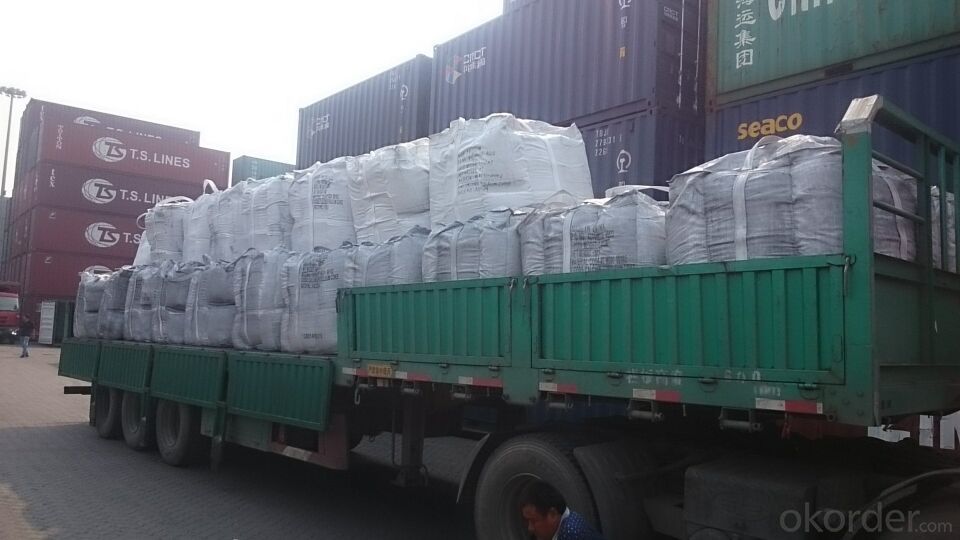
FAQ:
Packing:
(1). Waterproof jumbo bags: 800kgs~1100kgs/ bag according to different grain sizes;
(2). Waterproof PP woven bags / Paper bags: 5kg / 7.5kg / 12.5kg / 20kg / 25kg / 30kg / 50kg small bags;
(3). Small bags into jumbo bags: waterproof PP woven bags / paper bags in 800kg ~1100kg jumbo bags.
Payment terms
20% down payment and 80% against copy of B/L.
Workable LC at sight,
- Q: How does carbon cycle through living organisms?
- Carbon is exchanged and recycled among different parts of the Earth, including living organisms, in a process known as the carbon cycle. Living organisms primarily acquire carbon through photosynthesis, where sunlight, carbon dioxide, and water are used to produce glucose and oxygen. Plants absorb carbon dioxide from the atmosphere and convert it into glucose, which serves as an energy source for their growth. Some glucose is immediately utilized by plants, while the excess is stored as starch and other carbohydrates. This is how carbon is initially incorporated into living organisms. Consumers, such as animals, obtain carbon by consuming plants or other animals that have consumed plants. When animals consume plants, the stored carbohydrates are broken down into glucose, releasing carbon dioxide through cellular respiration. Animals use glucose as an energy source for their own metabolic activities. When animals and plants die or produce waste, their organic matter decomposes, releasing carbon back into the environment. Some of this carbon is converted into carbon dioxide through decomposition and returned to the atmosphere. However, decomposers like bacteria and fungi convert a significant portion of carbon into organic compounds that can be utilized by other living organisms. The carbon cycle continues as carbon is constantly exchanged between the atmosphere, living organisms, and Earth's reservoirs such as the oceans and soil. Carbon can also be stored for extended periods as fossil fuels like coal, oil, and natural gas. When these fuels are burned for energy, carbon dioxide is released into the atmosphere, contributing to the greenhouse effect and climate change. In summary, the carbon cycle is a complex process involving the continuous exchange and transformation of carbon between living organisms and the environment. It is critical for maintaining carbon balance in our ecosystem and plays a significant role in regulating the Earth's climate.
- Q: What is the role of carbon in respiration?
- Carbon plays a crucial role in respiration as it is a key component of organic molecules such as glucose. During respiration, glucose is broken down in the presence of oxygen to produce energy in the form of ATP. The carbon atoms in glucose are oxidized, releasing electrons that are ultimately transferred to oxygen, forming carbon dioxide (CO2) as a byproduct. This process, known as cellular respiration, occurs in all living organisms and is essential for the production of energy needed for various cellular processes. Without carbon, respiration would not be possible, and the energy required for growth, movement, and other life-sustaining activities would not be generated. Furthermore, the carbon dioxide produced during respiration is released into the atmosphere and serves as a crucial component of the carbon cycle, contributing to the regulation of Earth's climate and the growth of plants through photosynthesis.
- Q: What is the role of carbon in the formation of fossil fuels?
- The role of carbon in the formation of fossil fuels is crucial. Fossil fuels, such as coal, oil, and natural gas, are formed from the remains of ancient plants and organisms that lived millions of years ago. These organisms were primarily made up of carbon-based compounds. Over time, the organic matter accumulated and was buried under layers of sediment, subjected to intense heat and pressure. This process, known as carbonization, caused the carbon within the organic matter to undergo chemical changes, transforming it into fossil fuels. Therefore, carbon is the key element involved in the formation of fossil fuels.
- Q: How does carbon affect the formation of desertification?
- Carbon can indirectly affect the formation of desertification by contributing to climate change. Increased carbon emissions lead to global warming, which alters weather patterns and increases the frequency and intensity of droughts. These prolonged dry periods, combined with other factors such as deforestation and overgrazing, can accelerate soil degradation and ultimately lead to desertification.
- Q: What are the different types of carbon-based pigments?
- There are several different types of carbon-based pigments that are widely used in various industries. Some of the most common types include carbon black, graphite, charcoal, and lampblack. Carbon black is a highly pure form of carbon that is produced by the incomplete combustion of hydrocarbon fuels. It is the most widely used carbon-based pigment and is known for its intense black color. Carbon black is used in a wide range of applications, including inks, paints, plastics, and rubber products. Graphite is another important carbon-based pigment that is known for its dark gray to black color. It is a soft and brittle material that can be easily crushed into a fine powder. Graphite is used primarily in pencils, as it leaves a smooth and consistent mark on paper. It is also used in other applications such as lubricants, batteries, and electrical conductors. Charcoal is a carbon-based pigment that is produced by burning wood or other organic materials in the absence of oxygen. It is known for its deep black color and is commonly used in art as a drawing medium. Charcoal can be easily manipulated and smudged on paper, allowing artists to create a wide range of tones and textures. Lampblack, also known as carbon black or soot, is a pigment that is produced by burning organic materials such as oil or wood. It has a deep black color and is often used in printing inks, coatings, and dyes. Lampblack is also used in various industrial applications, including as a coloring agent in plastics and rubber products. These are just a few examples of the different types of carbon-based pigments that are commonly used. Each type has its own unique properties and applications, making them versatile and essential in various industries.
- Q: How does carbon affect the migration patterns of birds?
- Carbon does not directly affect the migration patterns of birds. However, carbon emissions from human activities contribute to climate change, which can indirectly impact bird populations and their migratory behavior. Rising temperatures and altered weather patterns due to carbon emissions can disrupt food availability, breeding, and wintering grounds, potentially leading to changes in migration patterns as birds adapt to these new conditions.
- Q: How is carbon used in the production of textiles?
- Carbon is used in the production of textiles in several ways. One of the most common uses of carbon in textiles is in the form of carbon fibers. These fibers are lightweight, strong, and have high tensile strength. They are used to reinforce various types of fabrics, adding durability and enhancing their performance. Carbon is also used in the production of activated carbon, which is a highly porous material. Activated carbon is commonly used in textile production for its ability to adsorb and remove unwanted odors and chemicals. It is used in the manufacturing of fabrics for sportswear, workwear, and other specialized textiles where odor control is important. Furthermore, carbon black, a fine powder made of carbon particles, is used as a pigment in textile printing and dyeing. It provides deep black color to fabrics and is commonly used in the production of garments, upholstery, and other textiles where a dark color is desired. Another innovative use of carbon in textiles is through the development of carbon nanotextiles. These textiles are made from carbon nanotubes, which are cylindrical structures composed of carbon atoms. Carbon nanotextiles have unique properties such as high electrical conductivity and thermal stability, making them ideal for applications like wearable electronics, smart textiles, and conductive fabrics. In summary, carbon is widely used in the production of textiles through the incorporation of carbon fibers, activated carbon, carbon black, and carbon nanotubes. These applications contribute to the strength, durability, odor control, coloration, and functionality of various types of textiles.
- Q: What is the concept of carbon equivalent? What is the relationship between carbon equivalent and weldability?
- C equivalent =[C+Mn/6+ (Cr+Mo+V) /5+ (Ni+Cu) /15]*100% formula: C, Mn, Cr, Mo, V, Ni, Cu are elements in the steel contentCarbon steel, determine the strength and weldability of the main factors is the carbon content. Alloy steel (mainly low-alloy steel) in addition to all kinds of alloy elements on the strength of carbon steel and welding also plays an important role.
- Q: What are the different types of carbon-based food additives?
- There are several different types of carbon-based food additives that are commonly used in the food industry. These additives serve various purposes, including enhancing flavor, improving texture, and extending the shelf life of food products. Here are a few examples: 1. Activated Carbon: This type of carbon-based additive is commonly used as a food coloring agent. It is a porous form of carbon that is processed to have high adsorption properties. Activated carbon is often used to give black color to certain food and beverages, such as black food coloring or black lemonade. 2. Carbon Black: Also known as vegetable carbon or vegetable black, this additive is derived from charcoal and is commonly used as a natural food coloring agent. It is often used to give a dark black or grey color to foods like black licorice, ice cream, and bakery products. 3. Carbon Dioxide: While not directly added as an additive, carbon dioxide gas is used in food processing and packaging to extend the shelf life of certain products. It is commonly used in carbonated beverages to create the characteristic fizz and also in modified atmosphere packaging to preserve the freshness of certain foods. 4. Carbonated Water: This is carbon dioxide gas dissolved in water, creating carbonic acid. Carbonated water is often used as a base for soft drinks and beverages, providing effervescence and a refreshing taste. 5. Carbonates: Carbonates, such as calcium carbonate and sodium carbonate, are used as acidity regulators in food products. They help maintain the pH balance and control the acidity of certain foods, such as canned vegetables, fruit preserves, and pickles. 6. Carbon-based Preservatives: Some carbon-based additives, such as sorbic acid and propionic acid, are used as preservatives to inhibit the growth of molds, bacteria, and yeasts in food products. These additives help to extend the shelf life of products like bread, cheese, and processed meats. It is important to note that while carbon-based food additives are generally considered safe for consumption, it is always advisable to read food labels and consult with professionals, such as dietitians or healthcare providers, if you have any concerns or specific dietary restrictions.
- Q: What are the differences between the three carburizing, nitriding and carbonitriding? What are the different effects on the material?
- Carbonitriding is the method of treating the surface of steel parts at the same time, penetrating the carbon atoms, nitrogen atoms of the river, forming the carbonitriding layer, so as to improve the hardness and wear resistance of the workpiece and to improve the fatigue strength of the river
Send your message to us
Used in EAF as Charge Coke for Steel Plants with Moisture 0.5%max
- Loading Port:
- Tianjin
- Payment Terms:
- TT OR LC
- Min Order Qty:
- 21 m.t.
- Supply Capability:
- 6000 m.t./month
OKorder Service Pledge
OKorder Financial Service
Similar products
Hot products
Hot Searches


